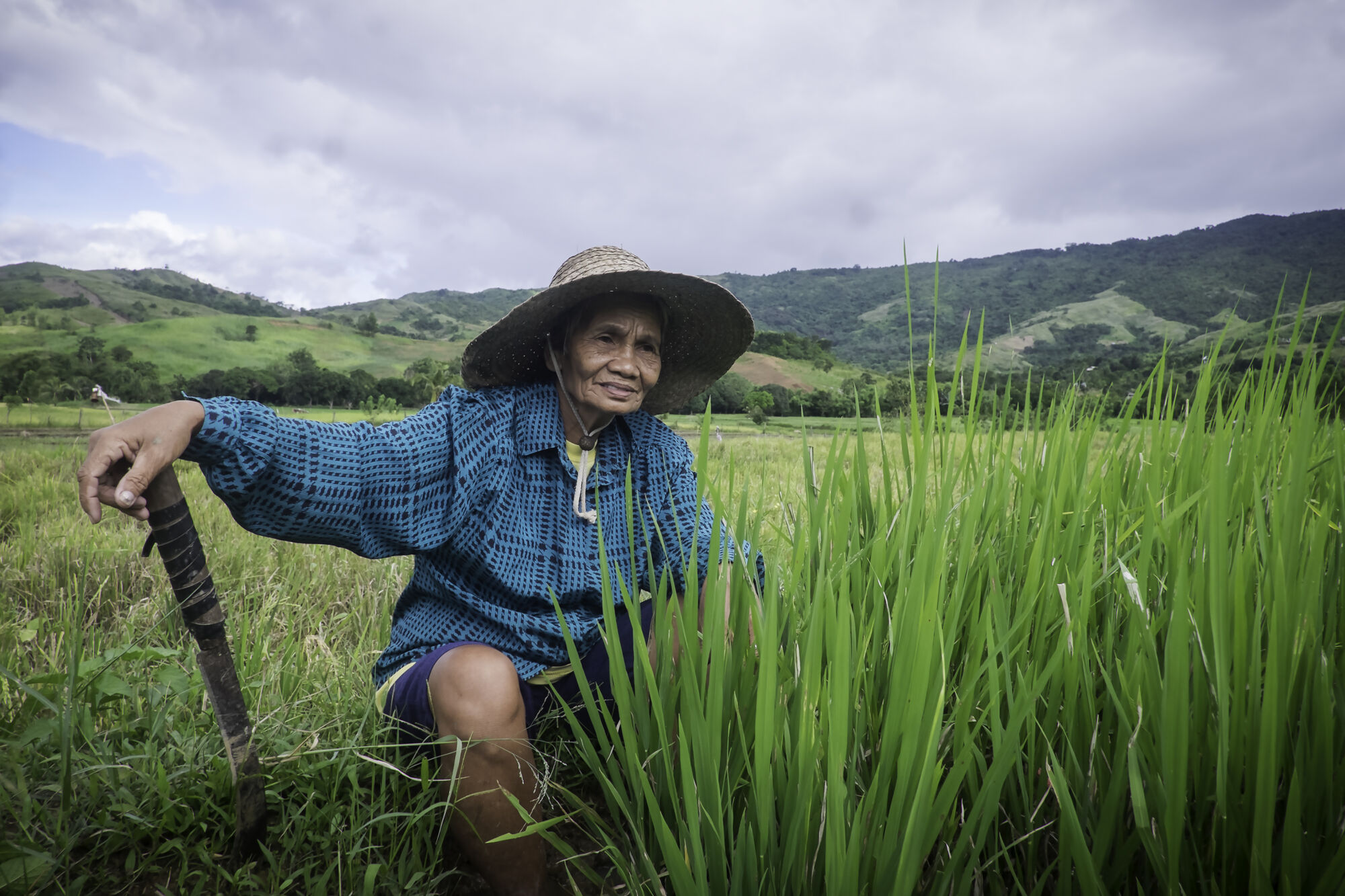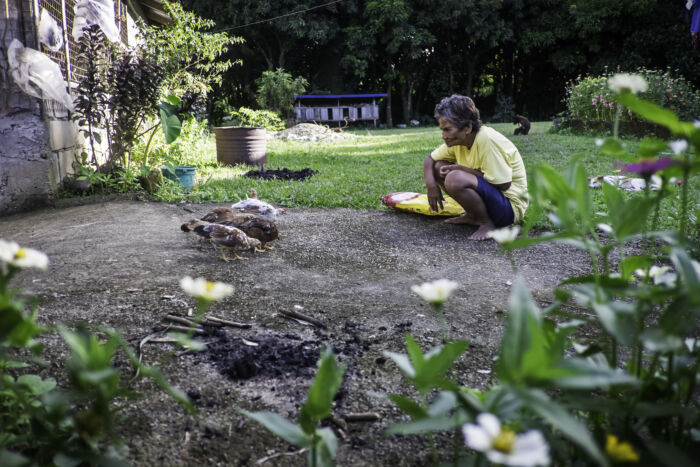Placida Odencio and her family live in a blue-painted house with a corrugated metal roof, and in the garden grow flowering ornamental bushes, coconut trees, mango trees and guava trees. There is also a henhouse and a pigsty. Looking beyond the fruit trees, you can see the ten hectares of rice fields that bring the family a livelihood.
When Placida, known by the nickname Nanay Placing, first came to the spot in San Ysiro on the outskirts of Manila in the early 1970s, it all looked very different. She and her husband had been promised land, a water buffalo and enough rice to keep them going to the next harvest if they settled in the area. Instead, they found a patch of wilderness which they had to clear for farming.

It took us two years to get on our feet. We ate only porridge every day.
Today, she is 77 years old. Her husband Isidro is 80 and can no longer work in the fields. But Nanay Placing does, along with her ten children and grandchildren. They primarily grow rice, which is also the family’s main food. They use 35 kilos of rice a week.
“We keep enough rice to make it to the next harvest, and we sell the rest,” says Nanay Placing.
“Our food is not that nutritious. No one comes up here to the mountains to sell meat, for example. Sometimes we buy venison or boar that someone has caught. When I don’t have some kind of meat to cook, the family gets vegetables. We eat vegetables every day, which I plant around our house,” says Nanay Placing, adding that they also eat fish they catch in the stream, and eggs from the farm’s chickens.
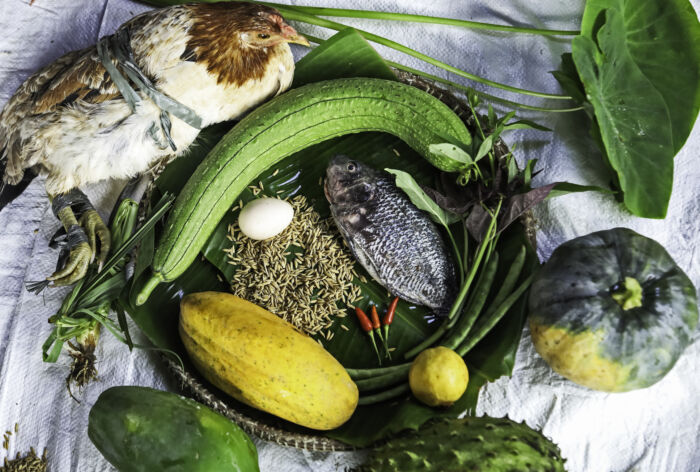
One in ten are undernourished in the Philippines
Of 110 million people in the Philippines, almost 70 million cannot afford to eat a healthy diet. Close to one in ten people are undernourished, according to UN estimates.
A total of 479 million people in Asia were deemed to be malnourished in 2018. That’s 58 per cent of all malnourished people in the world. Since the pandemic, the number of households in the Philippines suffering from hunger has reached a record 7.6 million.
Hunger is most common among poorly educated families. Nanay Placing has never been to school, but she prioritises education for her children and grandchildren. The children have been to school, but now work on the family farm. The family’s main expenses are food and school fees. When money is short, the family cuts down on their own stock of rice and sells more so they can afford school fees, materials and uniforms.
“I want my children and grandchildren to take care of our land here, so they can get by without having to rely on us old ones. I also want them to go to school and get
jobs,” says Nanay Placing.
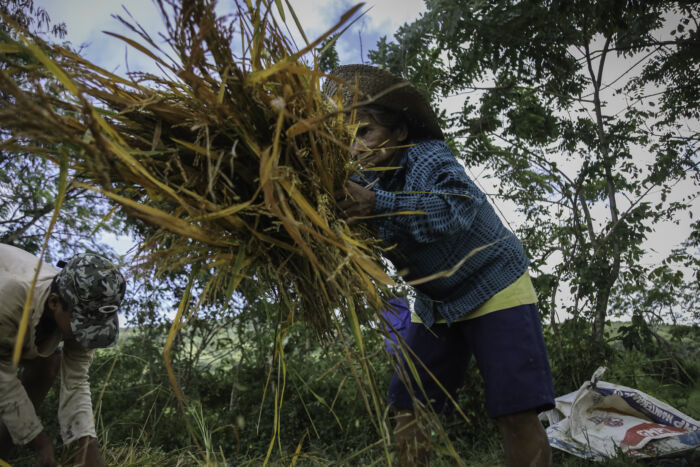
For watering, the family is entirely dependent on rain. They can’t afford any kind of irrigation system. A couple of times, the weather has ruined the harvest. Once a tropical storm blew the rice plants to pieces, and another time flooding destroyed the fields. The rice they managed to salvage went discoloured and tasted bitter so it couldn’t be sold.
“We ate it and shared it with relatives who also didn’t have enough to eat,” Nanay Placing explains.
When her husband was younger, he would take a temporary construction job in town during the dry period, when the land cannot be worked. They used that money to buy sugar, coffee, dried fish and onions, and sometime plastic sandals for the children. Over the years, the family has managed to save enough for various agricultural machines that make their work easier, such as a plough and a combine harvester. Today they also have two minibuses, which they use to take the rice to market. It took them a couple of years to save up for the first one.
“Every time we could save a bit of money we bought vehicle parts, which we then gave to a car mechanic to put together,” says Nanay Placing.
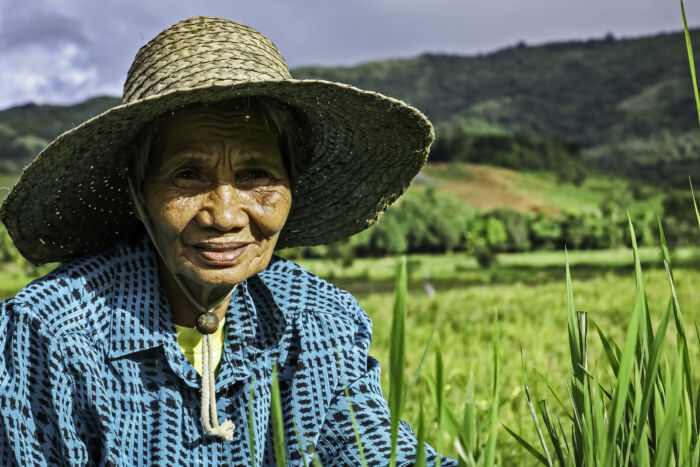
The government wants to move the farmers
At the moment, she is concerned about government plans to move farmers from a nearby area to San Ysiro and its surroundings, to make room for a large dam construction. This is why Nanay Placing is a member of a farmers’ organisation for 300 families in the area: Samahan ng mga Magasaka sa Bundok Antipolo, or SAMBA. The aim of the organisation is to secure the farmers’ access to land and strengthen their opportunities to make a livelihood.
“Fifteen hundred hectares of local land will go to the people who are relocated. Only a small share will be for us. But what happens to all the sweat we’ve invested in this land? I’m a member of a farmers’ cooperative. Together, us farmers have contacted the Ministry of Agriculture for help with the issue,” Nanay Placing concludes.
